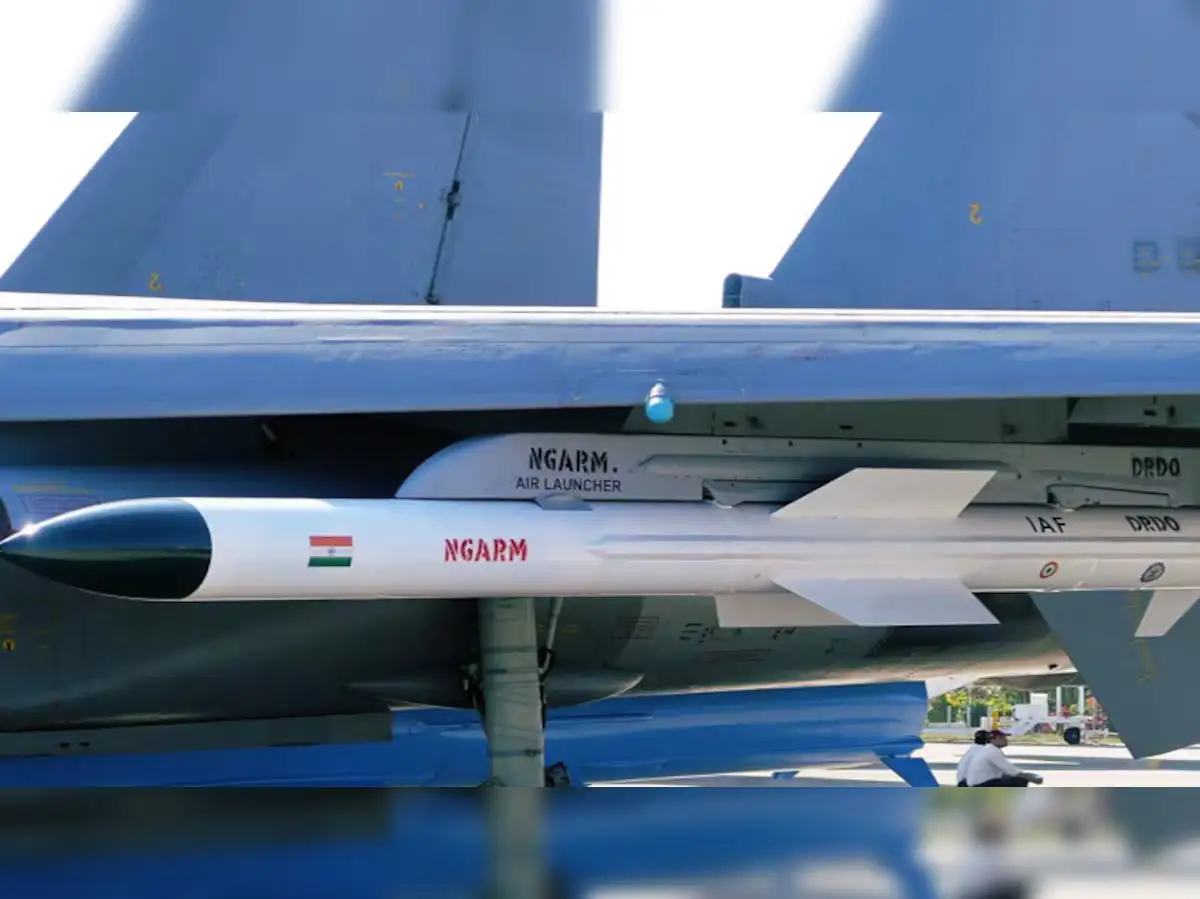SOURCE: RAUNAK KUNDE / NEWS BEAT / IDRW.ORG


The Hellenic Air Force (HAF), Greece’s air arm, is reportedly showing keen interest in India’s Rudram-1 and Rudram-2 series of air-launched anti-radiation missiles (ARMs) for integration with its fleet of Dassault Rafale fighter jets, according to sources cited by idrw.org. Developed by India’s Defence Research and Development Organisation (DRDO), these supersonic and hypersonic missiles are designed for suppression of enemy air defenses (SEAD) and destruction of enemy air defenses (DEAD), targeting radar, communication systems, and bunkers. Concurrently, the Indian Air Force (IAF) is advancing integration of the Rudram-1 with its Rafale and Tejas Mk1A jets, positioning India as a potential supplier of advanced SEAD solutions.
In contrast, European NATO partners, including France and Germany, face gaps in dedicated anti-radar capabilities, relying on the U.S.-made AGM-88 HARM or awaiting the MBDA RJ10 missile, which is not expected until 2035 with the Rafale F5.
Greece, a key NATO member, operates 24 Rafale jets as part of its air force modernization to counter regional threats, particularly from Turkey, amid tensions in the Eastern Mediterranean. The HAF currently relies on U.S.-supplied AGM-88 HARM missiles for SEAD missions, but the Rudram-1 and Rudram-2 offer a compelling alternative. According to idrw.org, HAF officials have engaged with Indian counterparts to explore integrating these missiles with their Rafale fleet, leveraging India’s recent technology transfer agreement with Dassault Aviation, signed on April 28, 2025, for Indian-made weapons on Rafale jets.
The HAF’s interest stems from the Rudram series’ advanced features and Greece’s need for a robust SEAD capability. France, a key Rafale supplier, retired its AS.37 Martel ARM in the late 1990s, leaving a gap in dedicated anti-radar munitions. The MBDA RJ10, part of the French-British Future Cruise/Anti-Ship Weapon (FC/ASW) project, is designed for SEAD but will only be available with the Rafale F5 by 2035, as reported by Defense News on March 17, 2025.
Meanwhile, Germany and other NATO partners depend on AGM-88 HARM variants, which, while effective, are costly and less flexible than the Rudram’s multi-platform compatibility. The Rudram-1’s 100–250 km range and Rudram-2’s 300 km range, coupled with indigenous production by Bharat Dynamics Limited (BDL), Bharat Electronics Limited (BEL), and Adani Defence & Aerospace, make it an attractive, cost-effective option for Greece.
Europe’s SEAD capabilities face challenges, as noted by French Air Force Lt. Col. Adrien Gorremans, who emphasized SEAD as a “number one priority” at a 2025 Paris forum. France’s lack of a dedicated ARM since the Martel’s retirement has left Rafale fleets dependent on SCALP-EG cruise missiles, which are less optimized for SEAD. The MBDA RJ10, a high-supersonic ramjet-powered missile, is designed to address this gap but won’t be operational until 2035 with the Rafale F5, creating a decade-long vulnerability. Germany, Poland, and other NATO members rely on the AGM-88 HARM, with a per-unit cost of $1–2 million, limiting procurement flexibility.
Greece, operating AGM-88 HARMs, seeks alternatives to reduce reliance on U.S. supplies and align with its Rafale-centric strategy. The Rudram series, with a lower estimated cost (?10–15 crore per unit, based on the IAF’s ?14,000 crore deal for 1,000 units), offers a budget-friendly solution. Its compatibility with Rafale, proven by India’s integration efforts, and indigenous production by BDL, BEL, and Adani Defence ensure supply chain reliability, unlike the HARM’s dependence on U.S. manufacturers.
Looking ahead, the HAF’s interest could lead to a formal proposal by 2026, following India’s integration success. DRDO’s plans for Rudram-3 (550 km range) and a ground-launched variant enhance the series’ appeal, potentially attracting other NATO members. India’s export strategy, backed by localized production and ToT agreements, positions the Rudram as a game-changer in global SEAD markets.
NOTE: Article cannot be reproduced without written permission of idrw.org in any form even for YouTube Videos to avoid Copy right strikes. Websites doing illegal reproductions will get DMCA and Legal Notices.